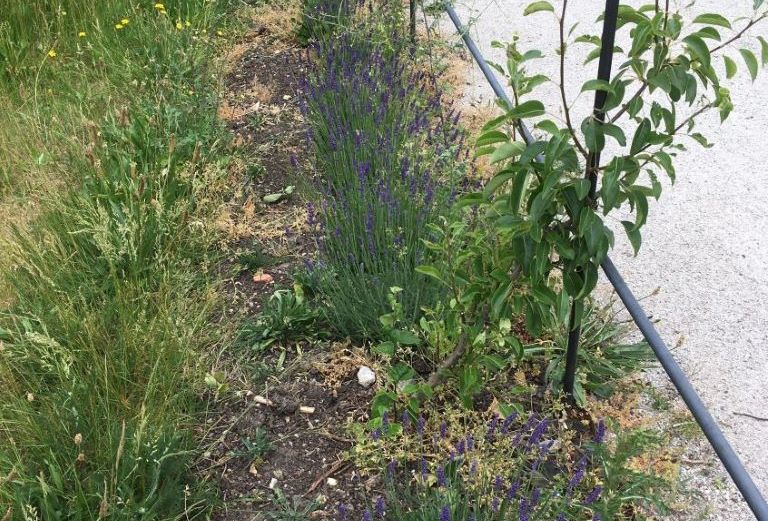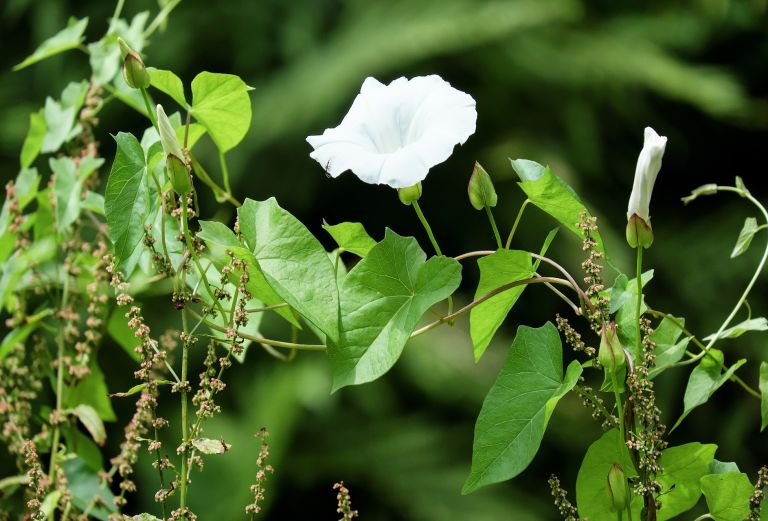
Hattie Moore, apprentice gardener
June in the Fulham Palace walled garden means flowers are beginning to bloom and our harvesting baskets are filling up. Alongside our productive plants in the walled garden the weeds are also thriving.
At the time of writing this blogpost our garden remains closed to the public and our workforce of around 50 garden volunteers are unable to help us with our tasks. To us gardeners, the lack of this essential help has really been felt and now can also be seen. Our weedy beds, fluffy grass edges, and unswept paths are a visual sign of how much we have come to rely on our volunteers.
Spending less time weeding and more time on watering and mowing during this hot period has given us a chance to appreciate our opportunistic and highly successful weeds. Some are self-seeded cosmos, sunflowers and rudbeckia- persistent cut flowers planted the previous years. These will be allowed to grow where they are or be replanted in neat lines in other areas of the garden. Annual and ephemeral weeds (plants that grow, flower and set seed multiple times in one season) such as fat hen, cleavers or sticky willy are most prevalent and we do try and catch these before they create millions more seeds. Perennial weeds can be more problematic as they often have tap roots that are difficult to dig out. Wild garlic, nettles and dandelions are examples of potentially useful perennial weeds that can be eaten. I enjoyed a delicious Fulham Palace wild garlic soup earlier this spring.

The biggest weed problem has been in the moat. We use organic gardening techniques such as cutting back or digging out in order to protect pollinating insects. The steep slopes of the moat, however, mean it’s very difficult to access and dig out the most persistent weeds. Bindweed has taken root all along the banks of the moat and has a stretchy and brittle root system that extends deep into the soil. Creeping thistle is also a problem due to its rhizomatic root system that breaks up and grows into new plants when it is disturbed. These weeds, if left to their own devices would take over and compete with the other plants until a monoculture was created- leaving no room for wildflowers. You may have noticed we have strimmed the bottom and top of the moat, this is to keep these perennial weeds in check and to allow access for planting more wildflowers.
Although the weeds are building up, we are very happy to be working in our garden and to see all the plants thriving.